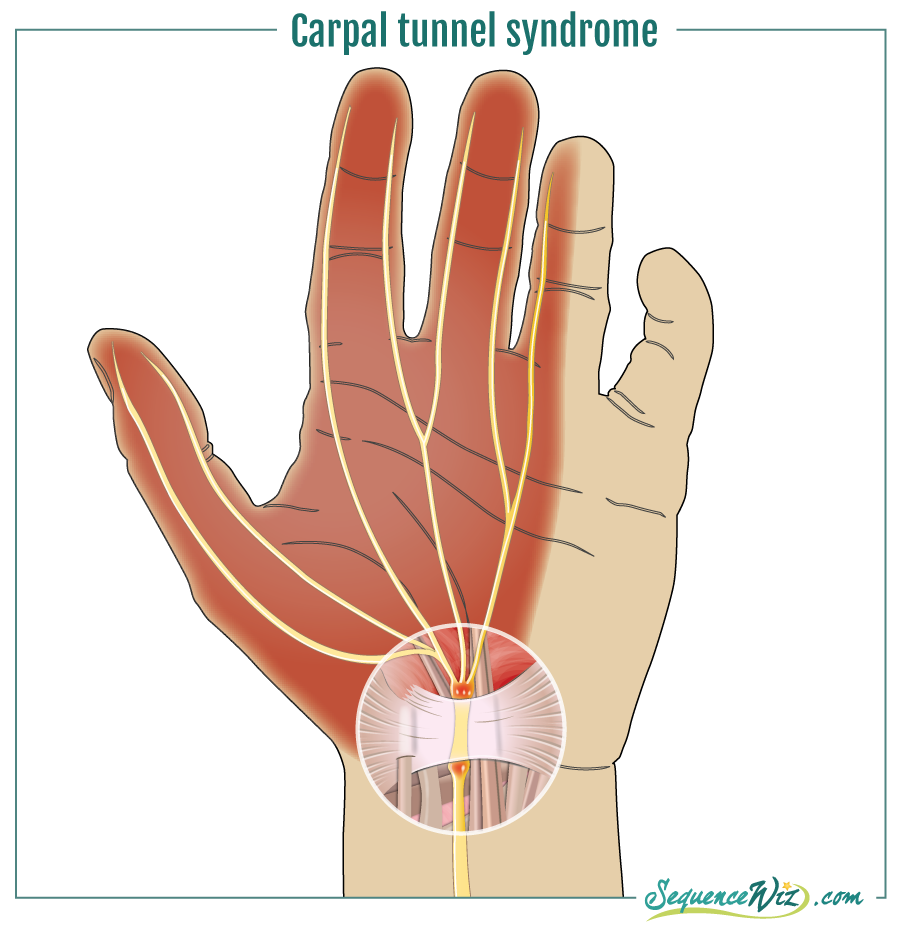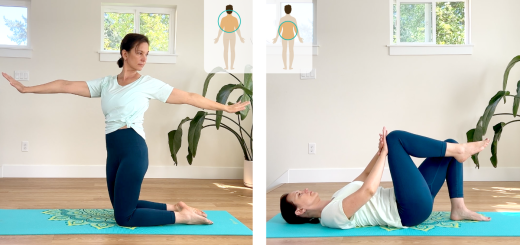Why do we get wrist pain?
5One of my former yoga students works for Intel. Some time ago he developed sharp wrist pain that made it very difficult for him to type and use a computer mouse. As soon as his company got a wind of it he was immediately referred to a team of experts that the company has on staff. He got hand rehabilitation therapy, massage therapy, acupuncture and a visit from an ergonomics specialist. The intervention was swift and effective – within few weeks the pain was gone. I was impressed. (If only his company had similar system in place for back pain! ☺)
There are a few lessons that I learned from that experience:
1. Wrist pain is so common that some larger tech companies have “wrist pain management teams”– wow!
2. Some wrist pain can be managed effectively with movement therapy and massage (unless it is a sign of a more complex, underlying condition like rheumatoid arthritis, ganglion cyst and so on).
3. Treatment of wrist pain cannot be focused on the wrist alone, it has to involve fingers, hands, wrists, forearms, shoulders and even upper back.
4. Ergonomics plays an important role in wrist pain management – hand positions during typing, mousing and other activities MUST be analyzed and improved upon.
5. It’s best to deal with wrist pain right away, before it becomes a chronic issue.
Your wrist is a pretty complex structure. It consists of:
– eight small bones
– ligaments that connect those bones to each other (and to hand bones and forearm bones)
– tendons that attach muscles to bones.
The most “popular” of those structures is transverse carpal ligament, which forms the infamous carpal tunnel. This ligament creates something like a bottle-neck structure at the base of the hand; tendons and the median nerve pass through that opening. If the opening becomes smaller (for whatever reason) or the tissues between the ligament and bones become inflamed, they can compress the tendons and nerves, which leads to pain in the hand, wrist and forearm.
Why does this opening become smaller? “The human body simply wasn’t designed to perform the same movements for 8 hours a day, 5 days a week. In an attempt to keep up with the demands, the body tends to hypertrophy, or grow bigger and thicker wherever we use it most. This is true of muscles and bones, and it also happens with the synovial sheaths at the wrist. When they thicken because of overuse, they press on anything else that has to travel through the tiny tunnel formed by the carpal bones and the transverse carpal ligament – namely, the median nerve. The ligament may also swell with chronic irritation, adding to the pressure on the median nerve.” (1)
Repetitive use is not the only reason for carpal tunnel syndrome. It can also be a result of other systemic diseases (diabetes, hypothyroidism, lymphedema, rheumatoid arthritis and so on).
There are also other factors that can cause wrist pain. Here are some of them:
1. Sudden impact (breaking a fall with your hand, car accident and so on) can cause strains, sprains and minor bone fractures.
2. Neck injury. Herniated disks in the neck can cause pain and tingling all the way down the arms.
3. Repetitive stress from hand overuse (even if it is not manifested as carpal tunnel syndrome).
4. Arthritis (particularly rheumatoid arthritis)
5. Ganglion cysts (small fluid-filled lumps that can show up on the wrists and hands).
Some conditions that cause wrist pain cannot be avoided. For example, you cannot control whether or not you get rheumatoid arthritis, or whether or not your joints swell up during pregnancy. But some wrist pain can be prevented. What can we do to protect our hands and wrists and minimize the risk of injury? We will talk about it next week. Tune in!




















Best discussion of wrist pain I’ve read. Thank you.
Your blog is profound! After reading your articles, I come away well-informed, motivated, and inspired to learn more.
You’ve done it again–this article on wrists is yet another reason you are my favorite yoga blog. Thank you for all you do; it is appreciated! 🙂
Thanks for that! I’m Yoga instructor and i’m very mindful with my practice, however I allways get wrist pain in my right hand! And i treated with ice, massage and stretch… It get well a couple of days but then it come back. I’m worrying that I might have the arthritis.. 🙁 in my 30′ could be more than possible isn’t? Even if i have been practicing Yoga for 11 years?
Looking forward for part II ,
Namaste
Hi Valentina, I read your question, you have not specified, if you know which Asana aggravates your wrist pain? Is it Downward dog? Or hand stands? Could be that you put all weight only on the wrist. Try flattening your palm more and distribute more weight on the finger mounds and the whole palm. Hope this helps